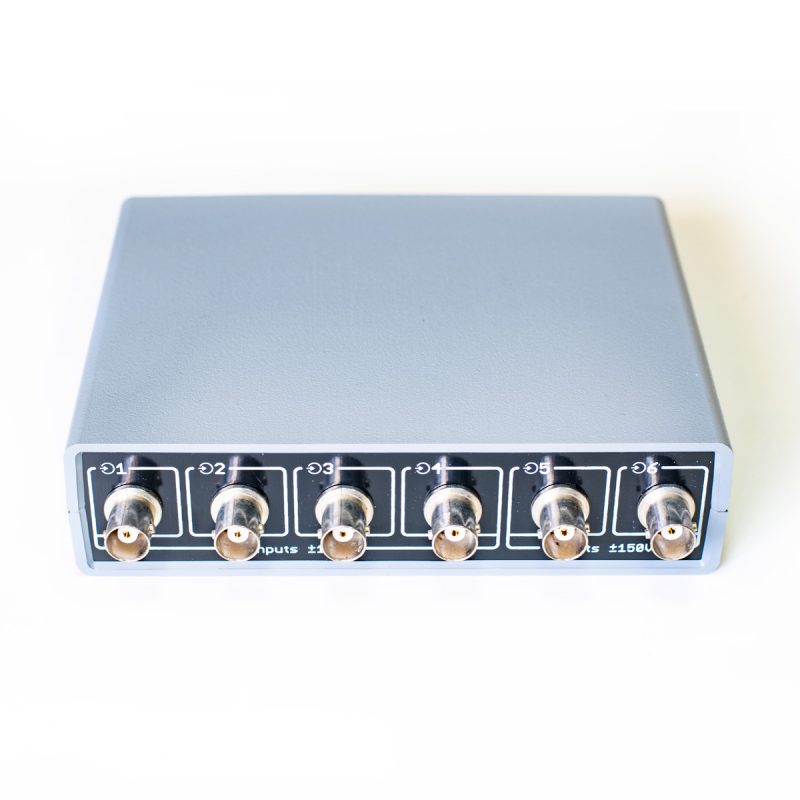 |
 |
 |
|---|---|---|
| Dx vacuum transducer −0.85..+0.15 Bar | Diagnostics with Dx transducer | Dx vacuum waveform |
The Dx transducer is designed to obtain the low-pressure (vacuum) waveform in the intake manifold of a gasoline engine, low-pressure waveforms in the crankcase and waveforms from exhaust gas flow using an oscilloscope.
Use of this sensor allows to obtain a quick assessment of the state of the engine mechanical condition, without disassembly.
The Dx transducer is intended only for a quick assessment of the engine condition, and is not intended to perform full-fledged diagnostics. This means that if the Dx transducer shows any deviations, then additional testing by other methods is required to confirm the malfunction.
If synchronized with ignition timing from cylinder #1, the cylinder, if any, with problems can be identified.
The transducer can work with all brands of automotive oscilloscopes.
| Appearance: |  |
| Measured pressure range: | –0.85…+0.15 Bar |
| Output voltage range: | 0.1…4.9 V |
| Formula for converting output voltage to relative pressure in Bar units: | P=0.22222222·U-0.89444444 |
| Formula for converting output voltage to absolute pressure in Bar units: | P=0.22222222·U+0.10555556 |
| Formula for converting output voltage to relative pressure in PSI units: | P=3.2231111·U-12.973022 |
| Formula for converting output voltage to absolute pressure in PSI units: | P=3.2231111·U+1.5309778 |
| Sensitivity: | 4.5 V / Bar |
| Output voltage at atmospheric pressure 1000 mBar (750 mmHg) | ~4.025 V |
| Response time: | < 1 ms |
| Working temperature range: | -20…80 °C |
| Supply voltage: | 8…15 V |
| Current consumption: | < 15 mA |
| Inlet Thread Size: | outer diameter 7mm |
| Output connector type: | XLR FEMALE |
| Output connector pinout: | 1: Output, 2: GND, 3: + |
| Diameter: | < 30 mm |
Intake manifold vacuum graph
This test is carried out with the engine cranking. To stop the engine from starting, the ignition system and / or the fuel supply system must be disabled.
 |
 |
| Diagnostics of the vacuum in the intake manifold | Vacuum waveform of the engine in a good condition |
 |
 |
| Vacuum waveform of a malfunctioning engine | Vacuum waveform of a malfunctioning engine |
Crankcase pressure pulsation waveform
Gases escaping into the crankcase through a worn cylinder or piston cause pressure pulsations there. By measuring the level of pressure pulsations of crankcase gases using a suitable transducer, one can judge the state of the cylinder or piston.
 |
 |
| Diagnostics of pulsations of crankcase gases | Pulsation waveform of a malfunctioning engine |
Exhaust gas flow pulsation waveform
Uneven pulsations in the exhaust gas flow can be felt even by hand and indicate the presence of problems in the fuel supply, ignition systems, as well as engine mechanical problems. The nature of the pulsations carries information about the operation of the engine. To measure the unevenness of the exhaust, a Dx transducer is used, which is connected to the exhaust pipe.
 |
 |
| Diagnostics of the pulsations of the exhaust gases | Waveform of pulsations of the exhaust gases of a malfunctioning engine |
| Dollar Bill Test |









